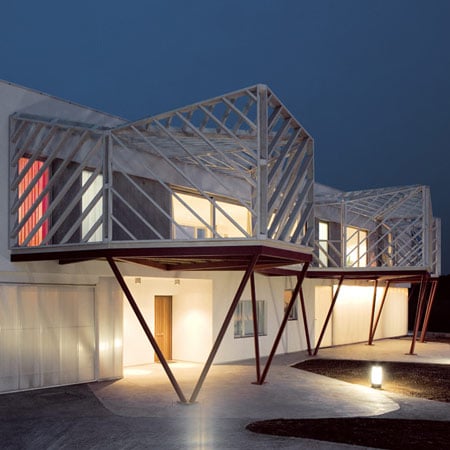
Casa Doble by María Langarita & Víctor Navarro
This rectangular house in Zaragoza by Madrid architects María Langarita and Víctor Navarro has an irregular geometric platform hanging off the front to afford views of the olive groves beyond.
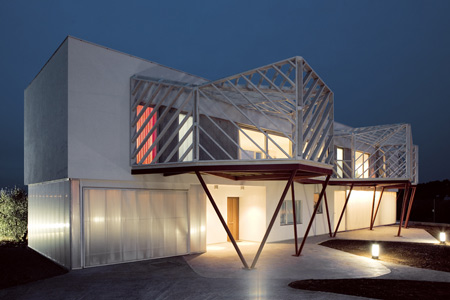
Called Casa Doble (Double House), the house was designed for a newly-wed couple who wanted to escape from the city to the Spanish countryside.
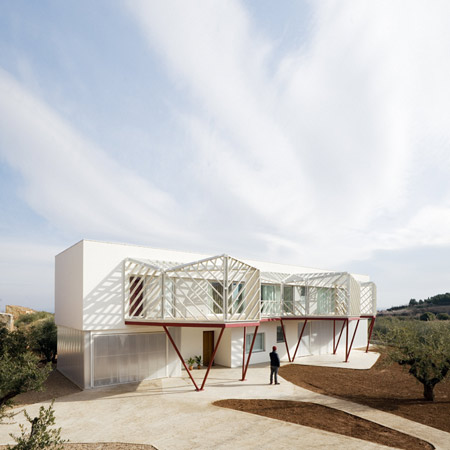
The ground floor acts as garage and entertaining space, while the main functional rooms are on the first floor.

The wooden frame around the house will eventually be covered by deciduous climbing plants to provide privacy from the street and summer shading.
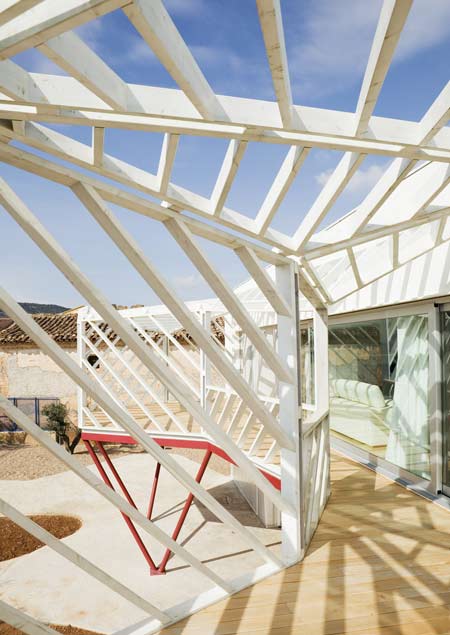
Here's some more information from the architects:
Casa Doble
Moving their home to the outer limits of a small town in the province of Zaragoza is the wish of a newly married couple about to retire. Embodied in their decision lies the conviction that it is possible to both undergo a radical change and still enjoy the comforts of their previous life. To explore this dual situation a project has been designed which attempts to evade its usual position as a solution at the end of a process and to take positions as starting point or state previous to the development.
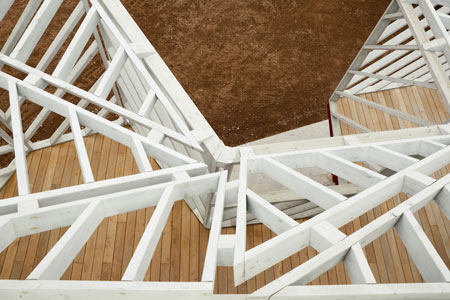
It is generally accepted that the difference between the rural and the urban worlds has to do with the proximity to certain centres and to the specific ways of life derived from them. Descriptions linked to constructions (in their broadest sense) which display spaces, rhythms and rituals between people and their surroundings. With this project, our aim was to evaluate, starting with the home, which housing conditions and expectations of life could mobilise each of these forms by contrasting them with the experiences and wishes of the clients. The conversations led to a duality of interests: on the one hand those regarding manageability, ways of use, organisation and representation associated to those of a conventional urban flat; and on the other hand, the search for an uninhibited, light-hearted and active life, linked to the outdoors and a move to a softened “wild life”.
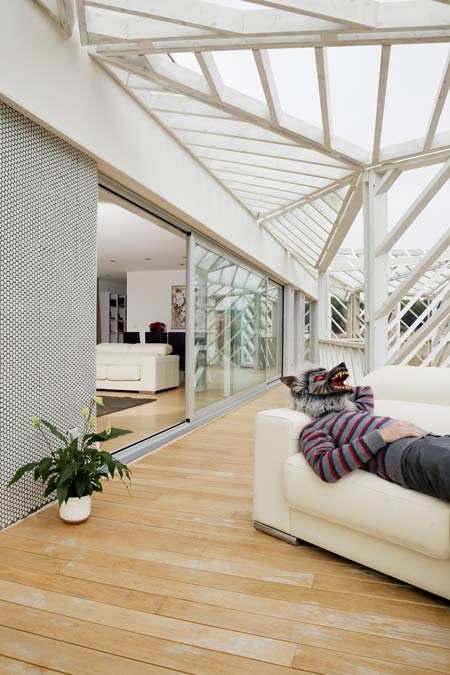
The plot, with a gentle, northward slope overlooking a wide, cultivated valley, is within the boundaries of the mountain town of Algairén, devoted mainly to the production of wine and oil.
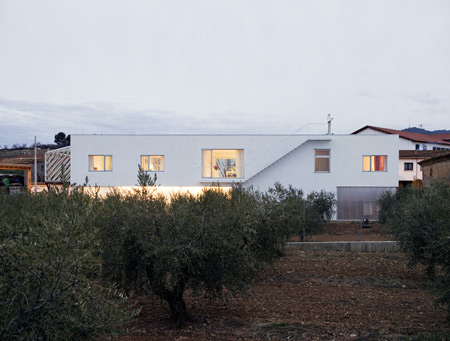
The land is part of an olive grove, annexed to the perimeter of the village. The house is positioned on the north side along the length of the developable limit in order to gain a small garden and a vegetable patch to the south and have privacy from the street. The project has been developed using two parallel houses, elevated a storey above ground level to enjoy views of the valley and the olive trees.
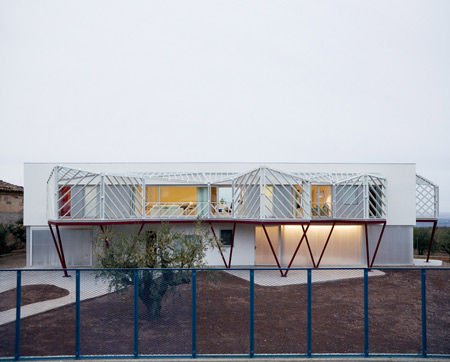
The first is a rectangular structure, conventional in construction with a narrow section, inheritor of the ideas of the modern movement where the nuclei of kitchen and bathroom areas separated the various living spaces thus always ensuring independence, dual orientation and cross ventilation.
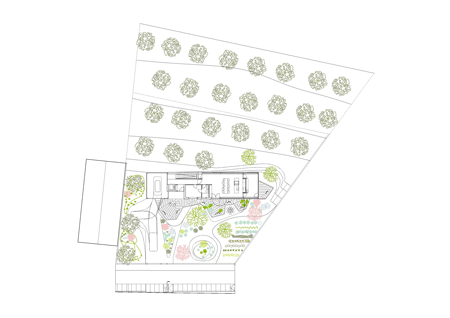
Click for larger image
Leaving the windows behind on the southern façade (as would an adolescent Gerald Durrel in search of adventure), the second home can be reached: an irregular geometric platform covered by a structural wooden shutter which folds to create different, unplanned areas connected directly to the bathrooms and kitchen self-contained functionality.
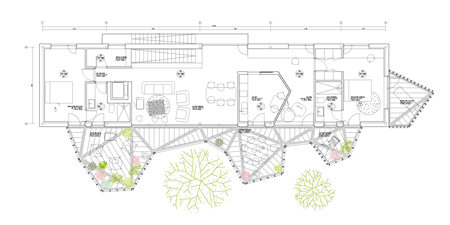
Click for larger image
The two structures achieve specific characteristics and are geared to use and optimise the house’s resources. The inside of the house is extended on the ground floor to resolve the programme’s requirements.
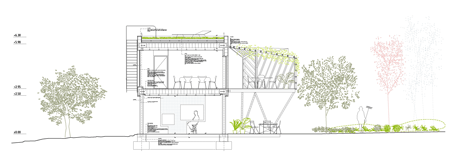
Click for larger image
The central nucleus which gives access to the upper floors separates two areas, of non-referential character, serves as a garage and party area. The exterior of the house is covered by a wooden frame with deciduous climbing plants that ensure intimacy from the street while at the same time stopping the house getting hot in the summer and guarantees, along with the planted roof, one of the foundations of the project: the avoidance of mechanical HVAC systems and savings in energy resources.

Click for larger image
The double house avoids blurring the limits between both desired ways of life or finding a single equal space. On the contrary, the project, with its duality, offers a coexistence of two differentiated house designs encouraging a state of permanent transition.
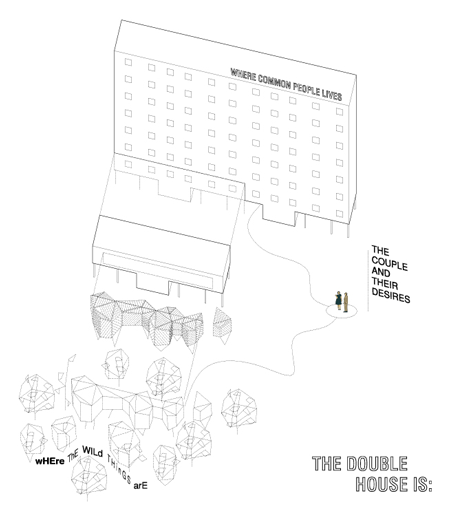
Click for larger image
Almonacid de la Sierra, Zaragoza
Architects: María Langarita y Víctor Navarro
Collaborators: Marta Colón, Roberto González, Juan Palencia
Engineers: Mecanismo S.l.
Construction Year: 2009
Client: Private
See also:
.
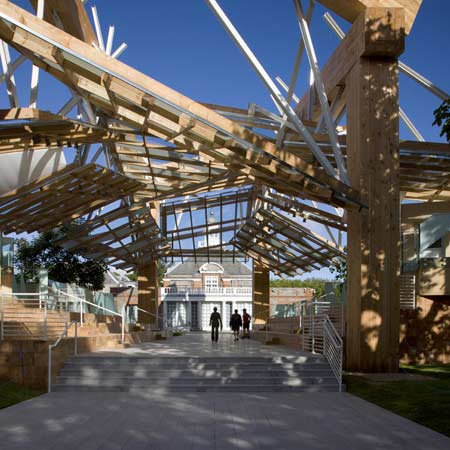 |
 |
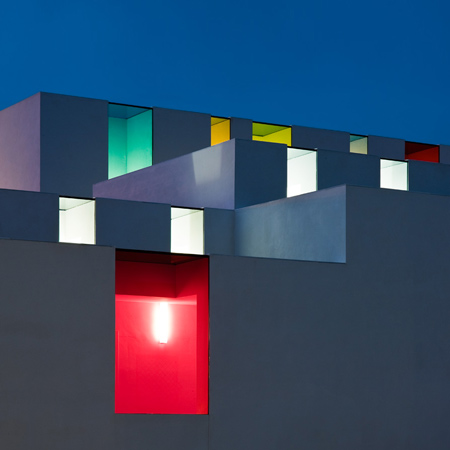 |
| Frank Gehry’s Serpentine Gallery |
House in Wakaura by Archivi Architects |
More architecture stories |